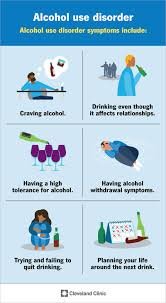BPT Navigating Trauma: A Body-Centered Revolution in Healing
Body Psychotherapy BPT is a revolutionary, research-backed therapeutic method that integrates the mind and body to unlock deep healing. It recognizes what many survivors already know trauma doesn’t just live in our thoughts. It lives in our bodies. Basil Fomanka
Why Traditional Talk Therapy Isn’t Always Enough
Many trauma survivors try traditional psychotherapy and feel stuck. Words alone can’t always reach the parts of us that are frozen, overwhelmed, or dissociated.
Trauma often bypasses our logical brain and lives in the nervous system triggering fight, flight, freeze, or fawn responses. BPT accesses these unconscious patterns through safe, embodied practices, allowing for lasting transformation.
How BPT Works: Science-Backed, Heart-Led
BPT uses a unique combination of:
Somatic Awareness: Tuning into physical sensations to uncover hidden emotional pain.
Movement Therapy: Using posture, gesture, and breath to process stored trauma.
Touch when appropriate and consented: To create a sense of safety and reconnection.
Grounding Exercises: Helping clients stay present and regulated during sessions.
Mindfulness and Breathwork: Activating the parasympathetic nervous system rest and digest.
These tools help recalibrate the nervous system, restore resilience, and reconnect survivors with their bodies, boundaries, and joy.
The Power of Positive Neuroplasticity
BPT encourages new neural pathways to form. Through safe, embodied experiences, clients rewire their brains for trust, safety, and vitality.
Every breath. Every grounding movement. Every mindful reconnection builds emotional flexibility and reduces the grip of past pain.
This is healing in action.
Who Can Benefit from BPT?
BPT is especially effective for:
Survivors of abuse or neglect
PTSD and complex trauma C-PTSD
Anxiety and panic disorders
Chronic pain and psychosomatic symptoms
Dissociation and emotional numbness
Burnout and caregiver fatigue
It’s suitable for all ages and identities, with adaptations for individual needs.
How to Start Your BPT Journey
Ready to feel empowered in your own body again?
Here’s how to begin:
1. Find a Certified BPT Practitioner
Look for therapists trained by reputable organizations such as:
The European Association for Body Psychotherapy EABP
United States Association for Body Psychotherapy USABP
Somatic Experiencing Trauma Institute
2. Schedule a Consultation
Ask questions, share your goals, and ensure you feel safe and heard.
3. Commit to the Process
Healing is not linear, but every step is progress. Trust your body—it remembers how to heal.
FAQs About BPT and Trauma
What does a BPT session feel like?
Expect a mix of talk, body awareness, breathwork, and movement. You are always in control, and nothing happens without your consent.
Is BPT scientifically proven?
Yes. Numerous studies validate its effectiveness for trauma, anxiety, and emotional regulation. It’s supported by neuroscience and attachment theory.
How is BPT different from somatic therapy?
While both are body-centered, BPT is a broader framework that integrates multiple modalities, including psychodynamic, cognitive, and movement therapies.
Can BPT help with childhood trauma?
Absolutely. BPT gently works with inner child wounds, dissociation, and developmental trauma—at your pace, with compassion.
Conclusion:
Navigating trauma isn’t about fixing what’s broken it’s about reconnecting with what’s always been whole inside you. Body Psychotherapy BPT offers a safe, science-backed path forward where healing is felt, not forced.






